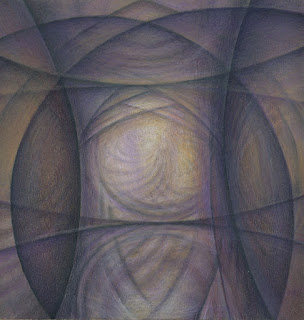Thursday, October 20, 2016
Connectedness
The theme of connectedness is emerging all around us. It’s
not hard to see why.
Our shared environment is a conspicuous truth in the digital
“noosphere”. That was a word that philosopher/ theologian Pierre Teilhard de
Chardin used to refer to the atmosphere of consciousness in which we
participate. He saw individuals as thinking molecules in this larger whole,
contributing our perception to a larger inclusive awareness. The Internet
mirrors this, is isomorphic in structure. Every individual mind is the hub of a
wheel of connections and life experience that creates a personal viewpoint that
influences and is influencing the whole. Similarly, in the physical world, just
as we are always adjusting to our surroundings, our surroundings are always adjusting
to us. I walk down the path and the birds fly off. Leaves and twigs are
displaced by my steps and the air currents my presence initiates. Squirrels
that know I have peanuts run toward me. There is no way of standing outside,
and those are just the visible reverberations. Whenever new ideas start pouring
from me. I say an inner thanks for the creative source for which I’m privileged
to be a conduit. The role of the being I am with its accumulation of knowledge
and unique perspective are the material that tune me to new meanings and are my
language to communicate. Increasing my learning increases what is available to
me to access, like familiarity with the music played in a concert can increase
appreciation of the meaning given to it by the musician. I’ve heard my husband
Michael play the same jazz standards uncountable times, but they still have the
power to stop me, make me listen and sink into the expression he gives it at
that moment. I Ching speaks of the holiness of music and its power “ to loosen
the grip of the obscure emotions.”
David Bohm used the word “artamovement” for the continuous
act of “fitting” that is the essential quality of the whole. Rather than
building blocks in the world machine, we are melodic lines in the symphony of
consciousness. We fit what we have to
offer into the structure unfolding around us like jazz improvises around the
shape of the tune.
Thinking of many modes of vibration in harmony would be a
good image to contemplate Bohm’s conception of individual elements as
abstractions from an unbroken wholeness. The worldview that sees reality
comprised of separate building blocks leaves us alienated. The emphasis on
competition for resources creates opposition and antagonism. With an image of a
deity outside of ourselves, this separation underlies everything. In a
worldview that sees all as continuous movement in which we participate, we are
naturally inclined to cooperate, to add our bit to the ongoing creation. Guided
by the image of music, we try to blend with the group, work together,
harmonize, fit what we have to offer into a larger whole. We feel a greater
sense of responsibility toward each other and our environment when we feel like
part of the same thing, the body of life, and the entirety of consciousness.
A Muslim reader wrote to me about how the Christian image of
God could get in the way of seeing the deeper, more comprehensive view of the
Spirit. Even images can begin to operate like labels, replacing the reality of
a subject with the definition and dogma that builds up around the
image/concept. “The Tao that can be told is not the eternal Tao.”
Just as Viktor Frankl concluded that the specific meanings
are not as important as the search for meaning, we might be better off not
clinging so tightly to the current images that emphasize separation. Searching for new images, lots of them, can help us reflect and gain access to the
pleasure of our pervasive connection.
Subscribe to:
Posts (Atom)
